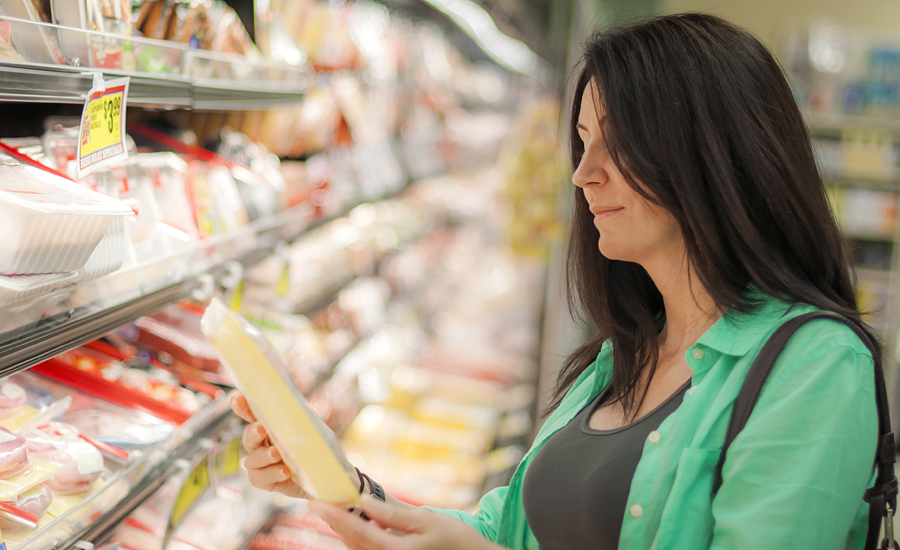Grocery-anchored centers continued to be an attractive property type for investors in 2017, with sales volumes increasing by 5.3%, according to Grocery Tracker 2018, a report released by JLL Retail, Chicago. The asset class remained stable amid a period of low retail transaction volumes. But, after grocery store expansions went bananas in 2016, the industry took a minute to digest in 2017. Openings of new grocery stores reached 13.4 million square feet of space, which is a decrease of 28.8% year-over-year.
“It’s not surprising that overall grocery store expansions fell in 2017, when compared to the boom in 2016. The largest grocery chains are feeling pressure from specialty grocers, discount grocers and wholesale clubs. But, we are seeing strong local chains competing head to head and winning. Locations within the trade area and in the right markets is key. More than one-third of new store openings were in just three states—California with 1.6 million square feet and North Carolina and Virginia with growth of 2.7 million square feet across both states. Retail follows rooftops, so the states with strong population growth will continue to see an influx of grocers,” says James Cook, director of retail research.
Grocers that experienced strong performance showed an appetite for three main experience drivers:
Diet and discount embracers. Grocers like Aldi, Lidl and Grocery Outlet are showing shoppers that quality doesn’t have to come with a high price tag – the discount grocers are regularly 30% cheaper. And, gluten-free and vegan-only diets aren’t going anywhere any time soon, so these grocers are embracing the trend.
Label-less. Grocers are embracing private label product, which allows brands to quickly respond to market changes while eliminating third-party costs. They are both debuting private labels and adding to existing product lines to build brand allegiance and improve margins, which can often be single-digit numbers, but once private labels are introduced, margins can more than double.
More mobile. Between online shopping, grocery delivery and click and collect, grocers are focusing on digital platforms to appeal to shopper’s desire for convenience and multi-channel shopping options. That said, online penetration in the sector remains incredibly low at 0.8%, so look for grocers to use digital integration to enhance, not replace, existing customs.
While grocers are taking a break on new store openings, investors’ hunger for grocery-anchored shopping centers isn’t satiated yet.
“Owning a property anchored by one of the top grocery chains is no longer a guarantee of strong performance,” says Chris Angelone, investment sales leader. “Investors are now looking to hedge risk by finding pockets of geographic safety for their acquisitions. Owning retail is like owning an operating business, and investors need to keep in mind changing consumer preferences.”
“The grocery sector in the year ahead will be an eventful one. We expect increased competition from foreign chains and non-grocer domestic companies entering the space, which will spur major advancements in technology. Grocers will be changing the way consumers shop, interact with their brand and products,” says Taylor Coyne, senior retail research analyst.
Trends to watch in 2018
Smaller and more focused stores. Smaller footprints have more opportunities in urban locations and in mixed use projects. Grocers like Aldi and Trader Joes benefit from the flexibility to take smaller spaces in vertically integrated projects. Some brands will continue expanding footprints, but traditional and legacy grocers may begin focusing on existing inventory and investing in improving the shopper experience.
Data-driven technology. As shoppers demand more digital integration, retailers have new access to unprecedented amounts of data. This data will provide greater efficiency in operations and enhanced customization of products for consumers.
Blockchain. For the grocery industry, blockchain has the capability of improving food safety, enhancing inventory management and allowing products to be recalled more quickly. With blockchain’s ability to improve data management between stakeholders in the supply chain, the grocery industry is prime for integration.
Partnerships and consolidations. The acquisitions with the greatest implications will occur between grocers and non-grocery companies that focus on innovation and technology and can build upon digital networks, logistics, delivery and customer engagement.
Rapid checkout. Expect grocers with existing rapid checkout technologies to continue rolling out programs across the country and for others to join the ranks of several grocers who have been testing checkout-free concepts.



